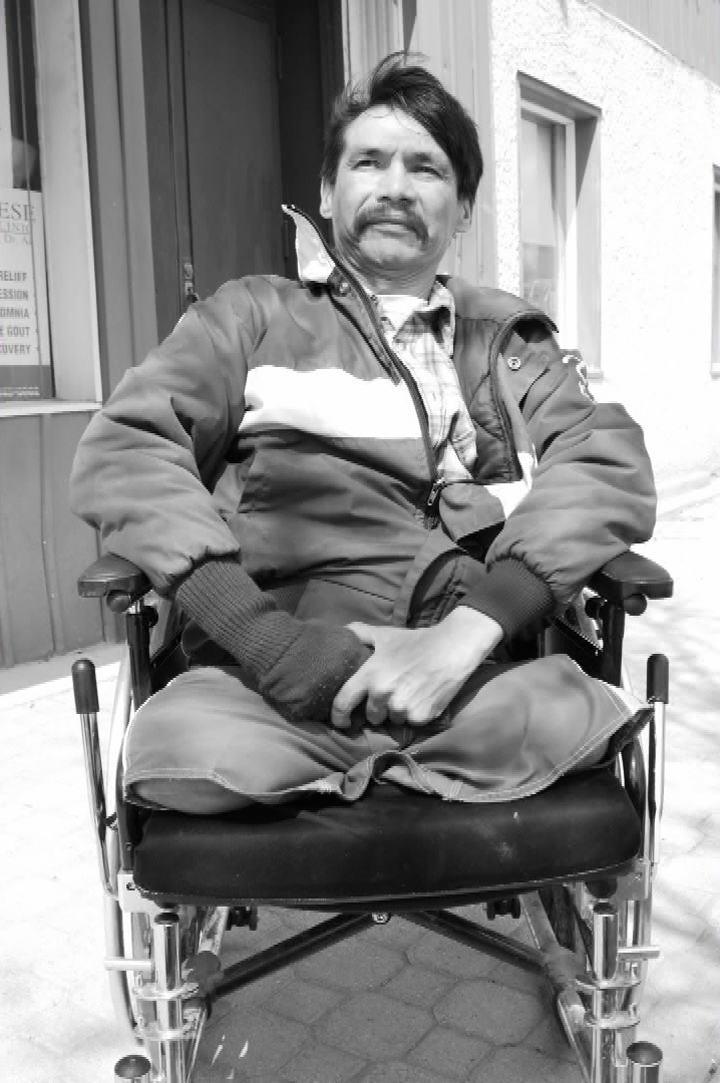WINNIPEG – It’s been almost six years since Brian Sinclair wheeled into the emergency room at Winnipeg’s Health Sciences Centre seeking treatment for a blocked catheter.

Thirty-four hours later, the aboriginal man was found dead in the waiting room.
An inquest into his death is to conclude this week and there is frustration it didn’t delve deeper into why many assumed the double-amputee was just a homeless person seeking shelter or a drunk “sleeping it off.”
“What’s really been missing from the equation is any analysis of the behavioural dynamic – how staff interact with the public, the assumptions that are made and the falseness of some of those assumptions when it comes to marginalized people,” said Vilko Zbogar, a lawyer representing the Sinclair family.
“Based on the way (Sinclair) looked, people assumed he was not in need of medical care.”
The final week is to include testimony from expert witnesses on how to improve patient flow and reduce long waits for care. The Sinclair family, the regional health authority and the Manitoba Nurses Union will then make final recommendations.
Two aboriginal groups and lawyers representing the family boycotted part of the inquest because Judge Tim Preston rejected calls to examine whether systemic racism played a role in Sinclair’s death.
The inquest heard Sinclair hadn’t urinated in 24 hours and so was referred to the hospital by a clinic doctor in September 2008. He wheeled up to the triage desk and spoke with an aide before taking a position in the waiting room.
Sinclair vomited several times as he languished there. A housekeeper cleaned up around him, but no one asked him if he was waiting to see a doctor.
By the time Sinclair was discovered lifeless by other patients, rigor mortis had set in. The cause of death was a treatable bladder infection.
An internal review found 17 staff members saw the man, but no one assumed he was waiting for care.
Some assumed he had been triaged already and was waiting for a bed. Others assumed he had been treated and discharged. Others thought he was drunk and was waiting for a ride or just needed a warm place to rest.
David Frayer, inquest counsel, said racism was not a recurring theme in the testimony from more than 80 witnesses.
“The only open evidence of racism was the observations made by people that they came to the conclusion that just because he was sitting there, he may have been under the influence rather than a person seeking treatment,” Frayer said. “That, I guess, has some racist undertones but racism generally has not been the focus of this inquest.”
Emily Hill, lawyer for the Aboriginal Legal Services of Toronto who withdrew from the inquest halfway through, said Sinclair’s case resonated with aboriginal people across the country.
“It’s important to think about continuing this conversation and making sure that this doesn’t just end this week and everyone goes back to how things were,” she said.
The Winnipeg Regional Health Authority declined to comment until the final report comes out. Lawyers for the authority argued throughout the inquest that many of the issues that led to Sinclair’s fate have been resolved.
The layout of the emergency room has changed so it is easier for nurses to keep an eye on the waiting room and triage has changed so incoming patients wear visible wristbands while they are waiting for care.
Sandi Mowat, president of the Manitoba Nurses Union, said those safeguards will help.
“The flow through emergency rooms throughout the city is still a problem at times,” she said. “I think some of the recommendations that will come out of the inquest will help that.”



Comments